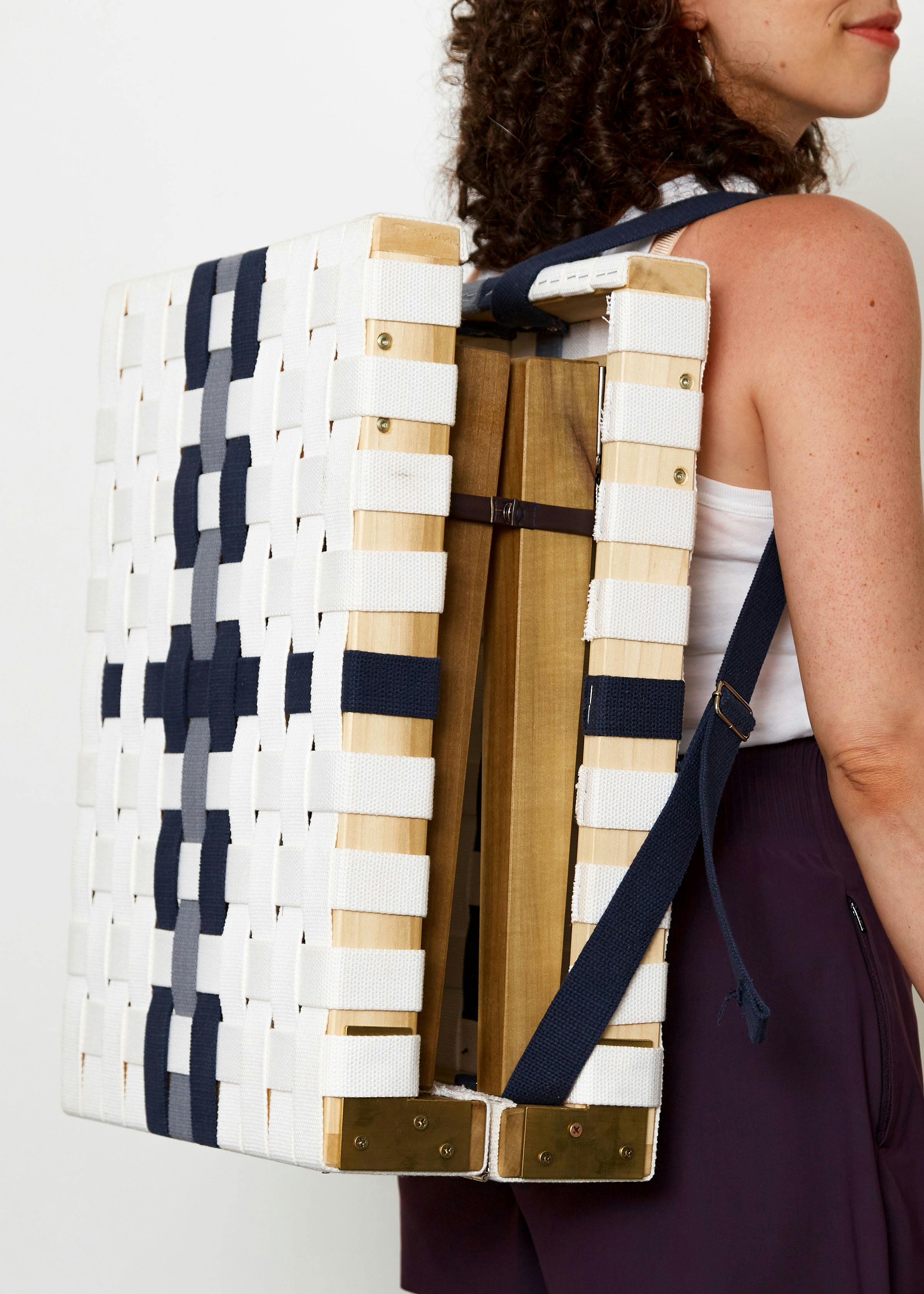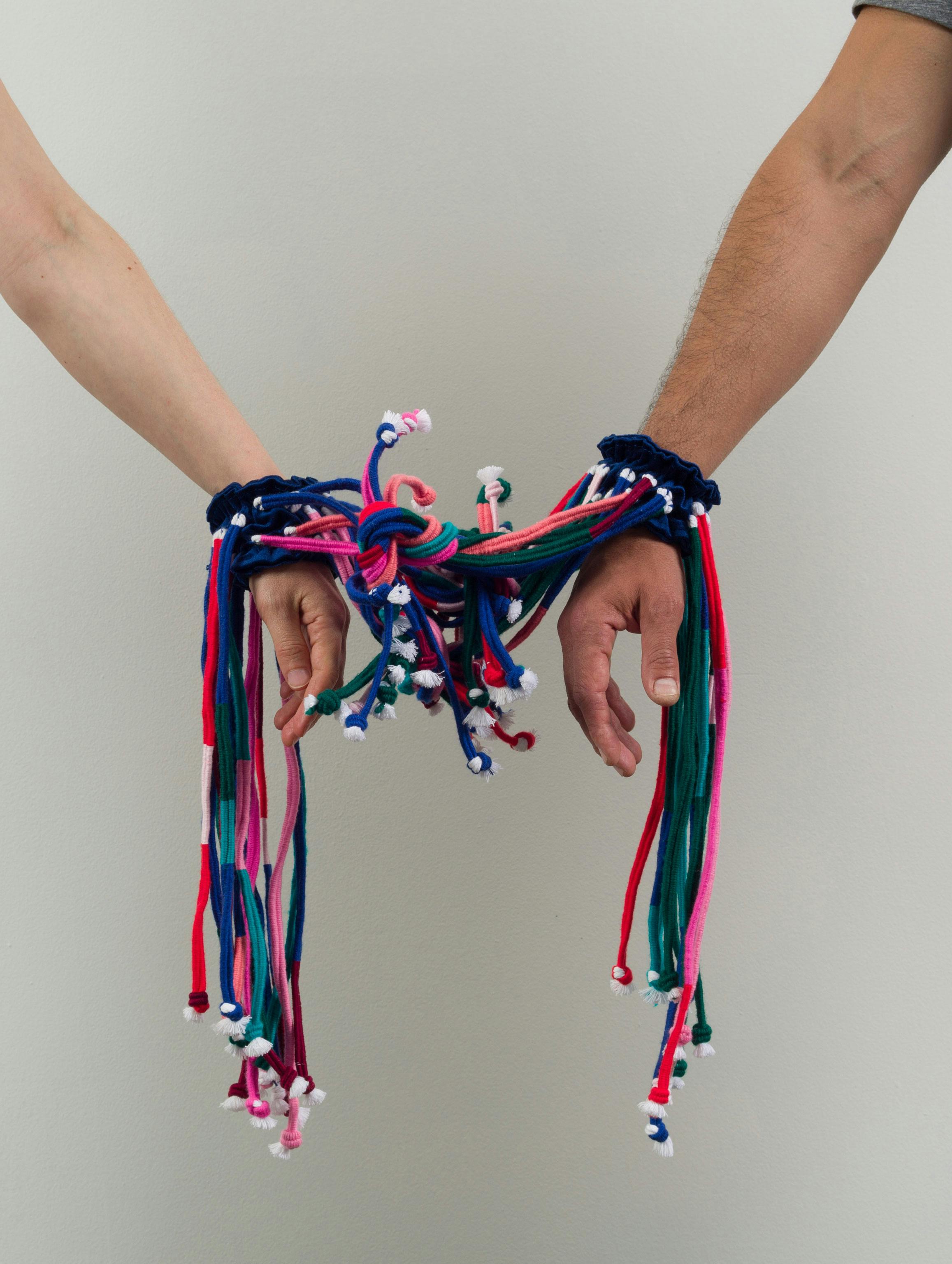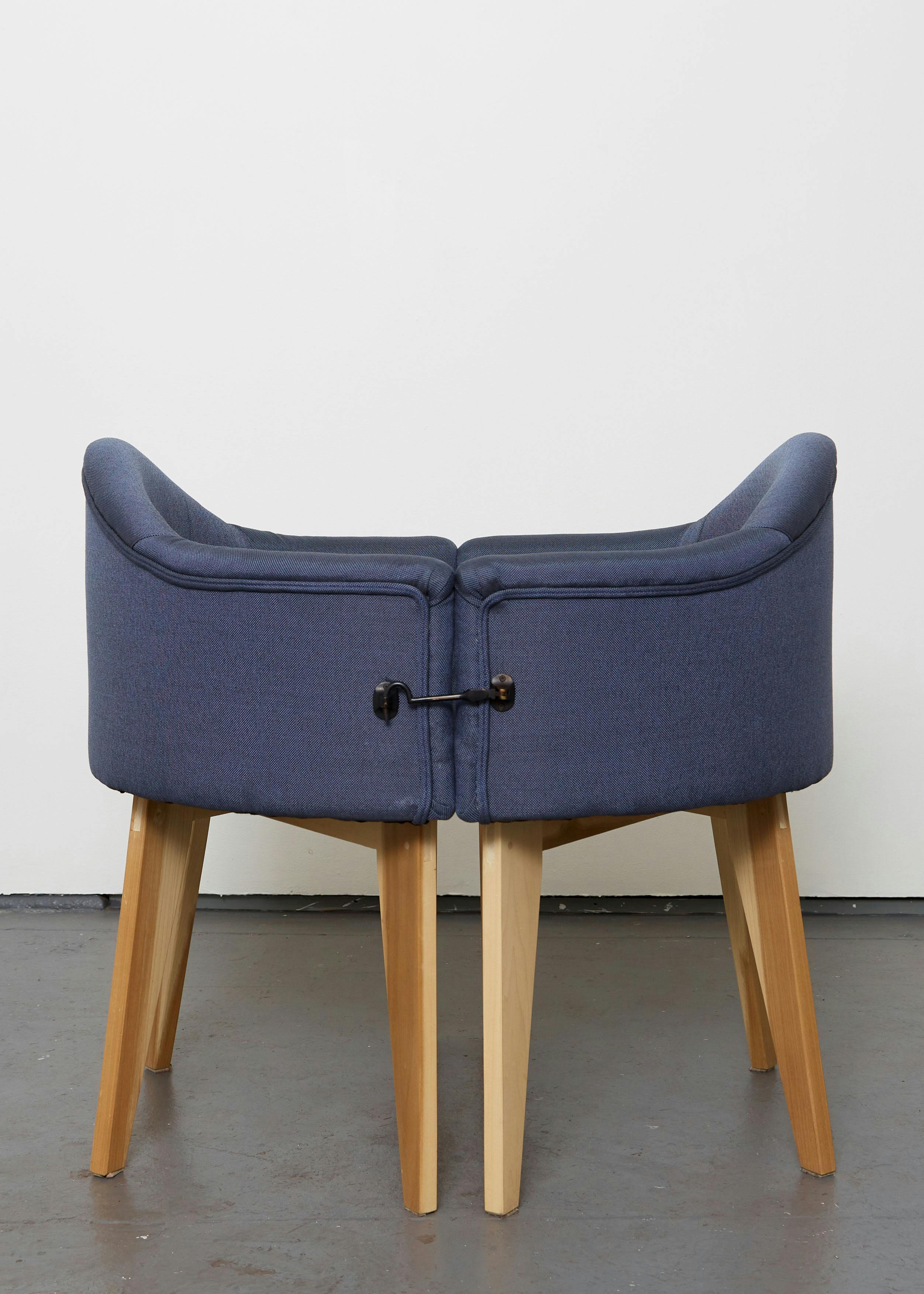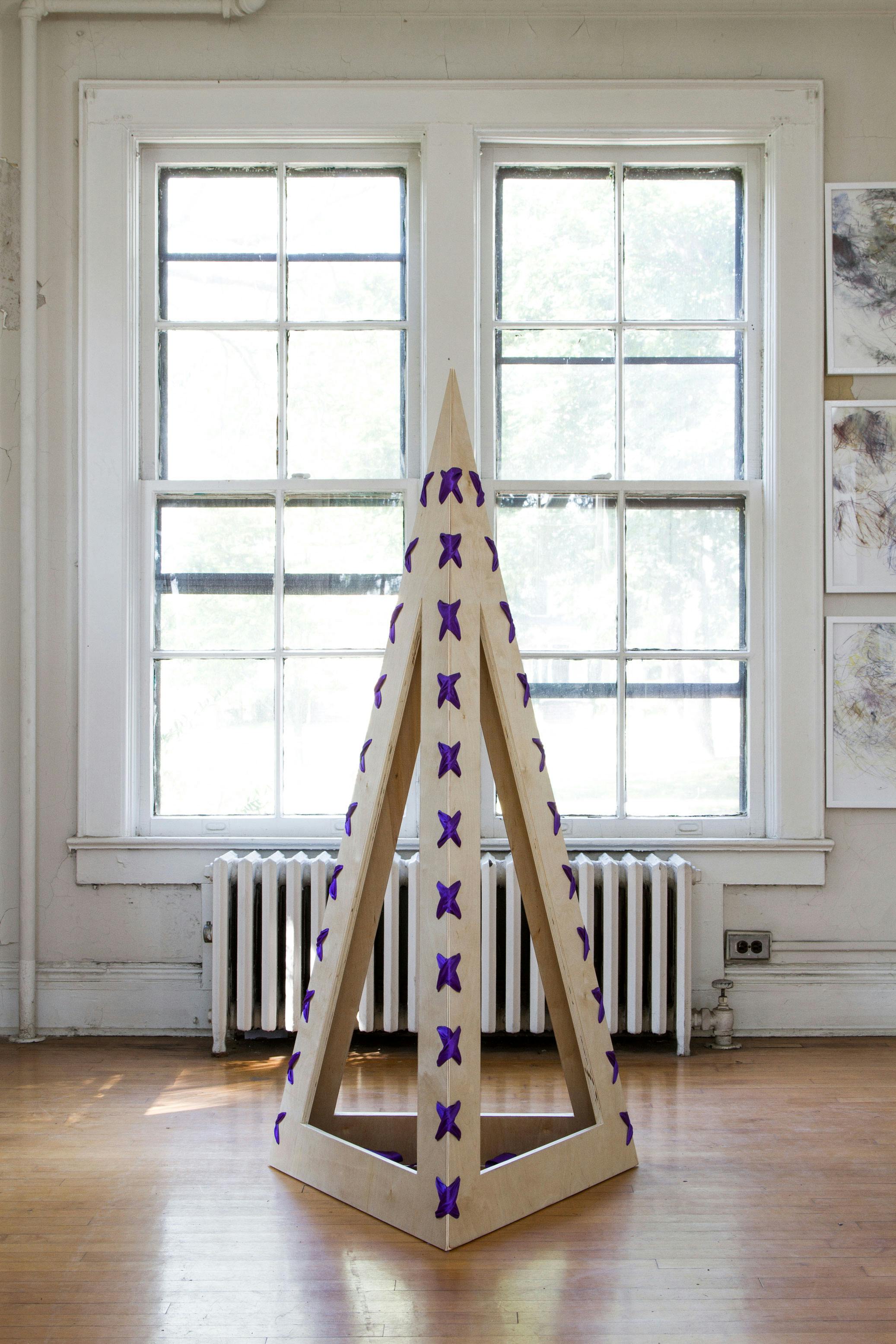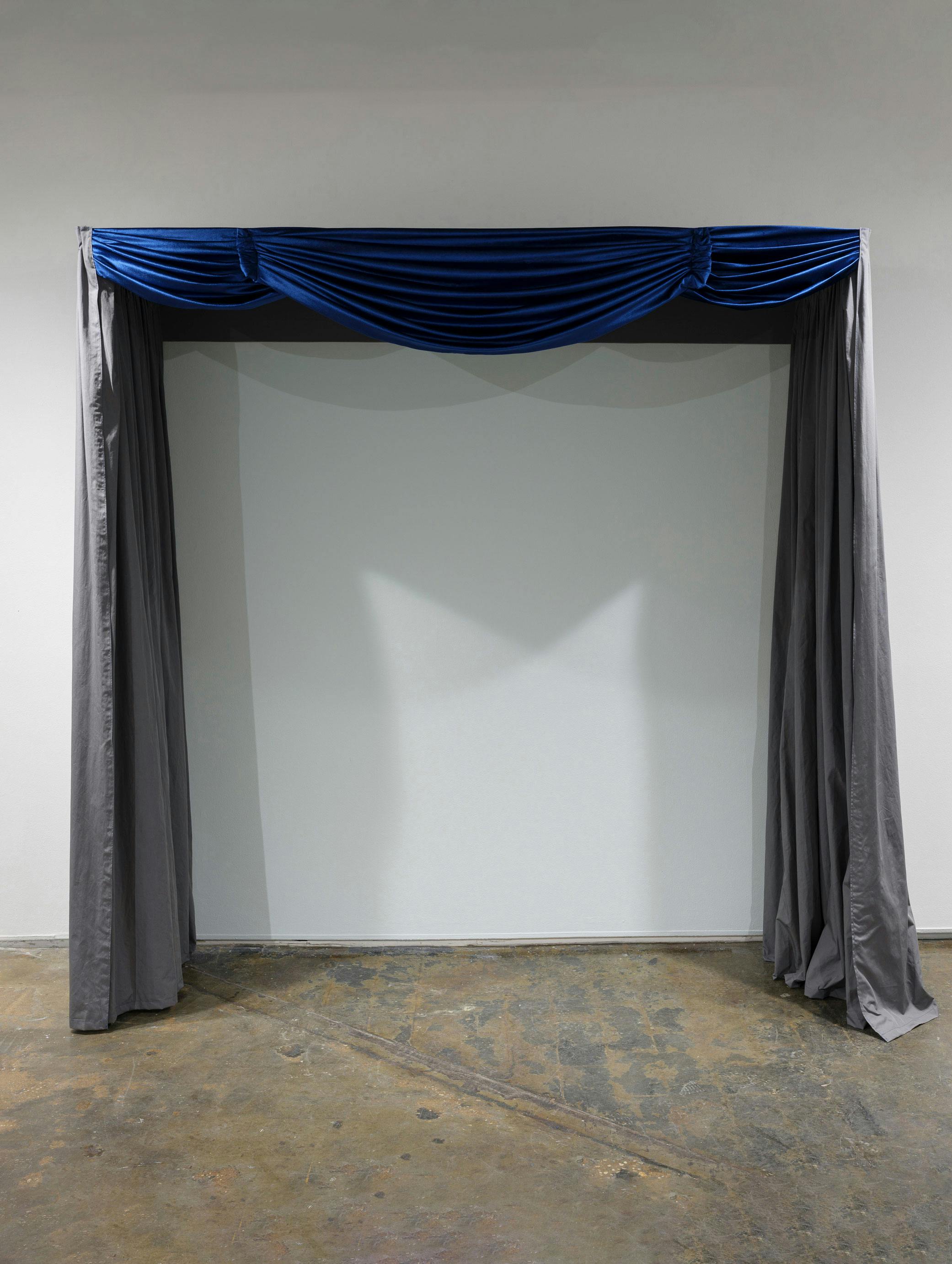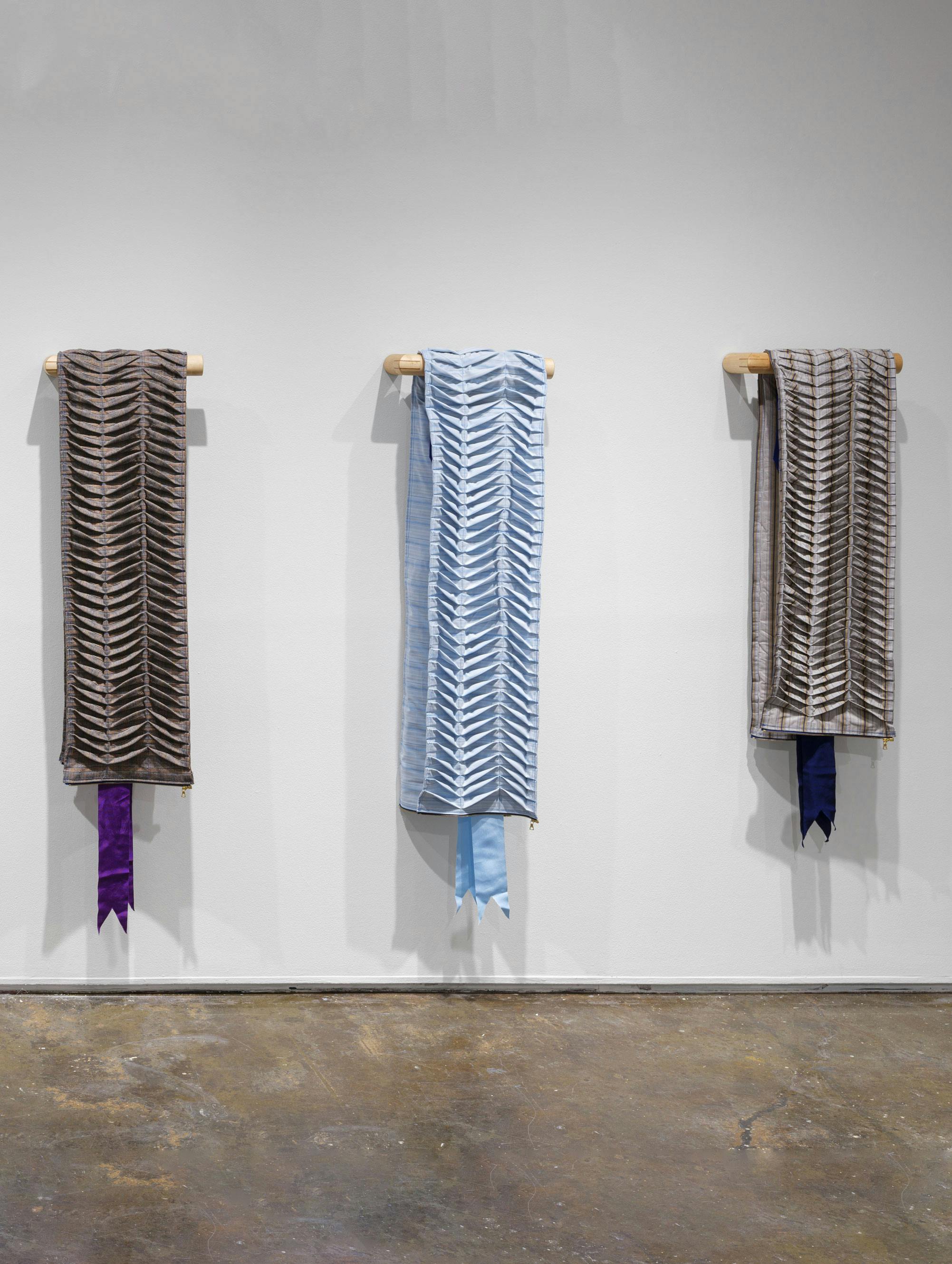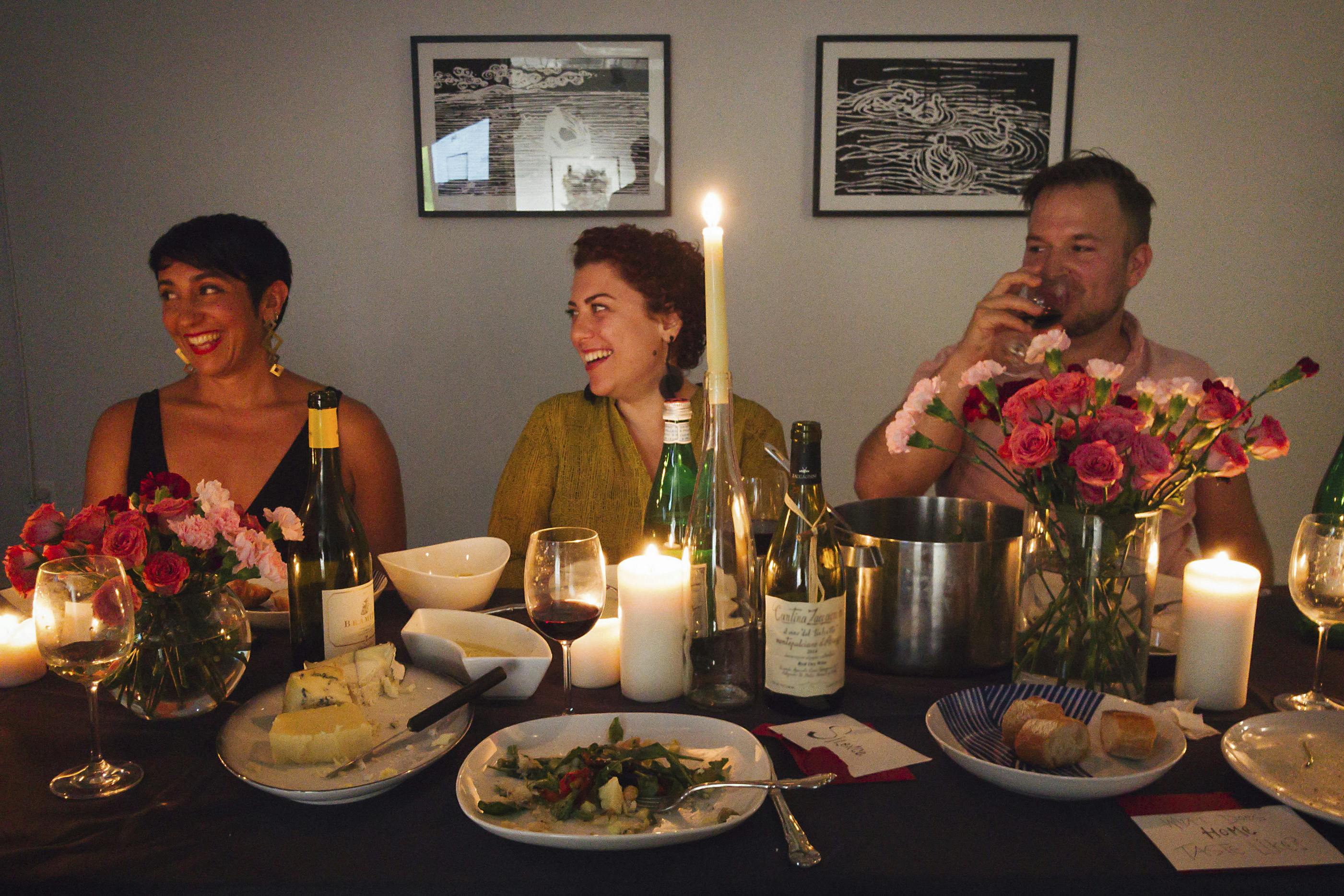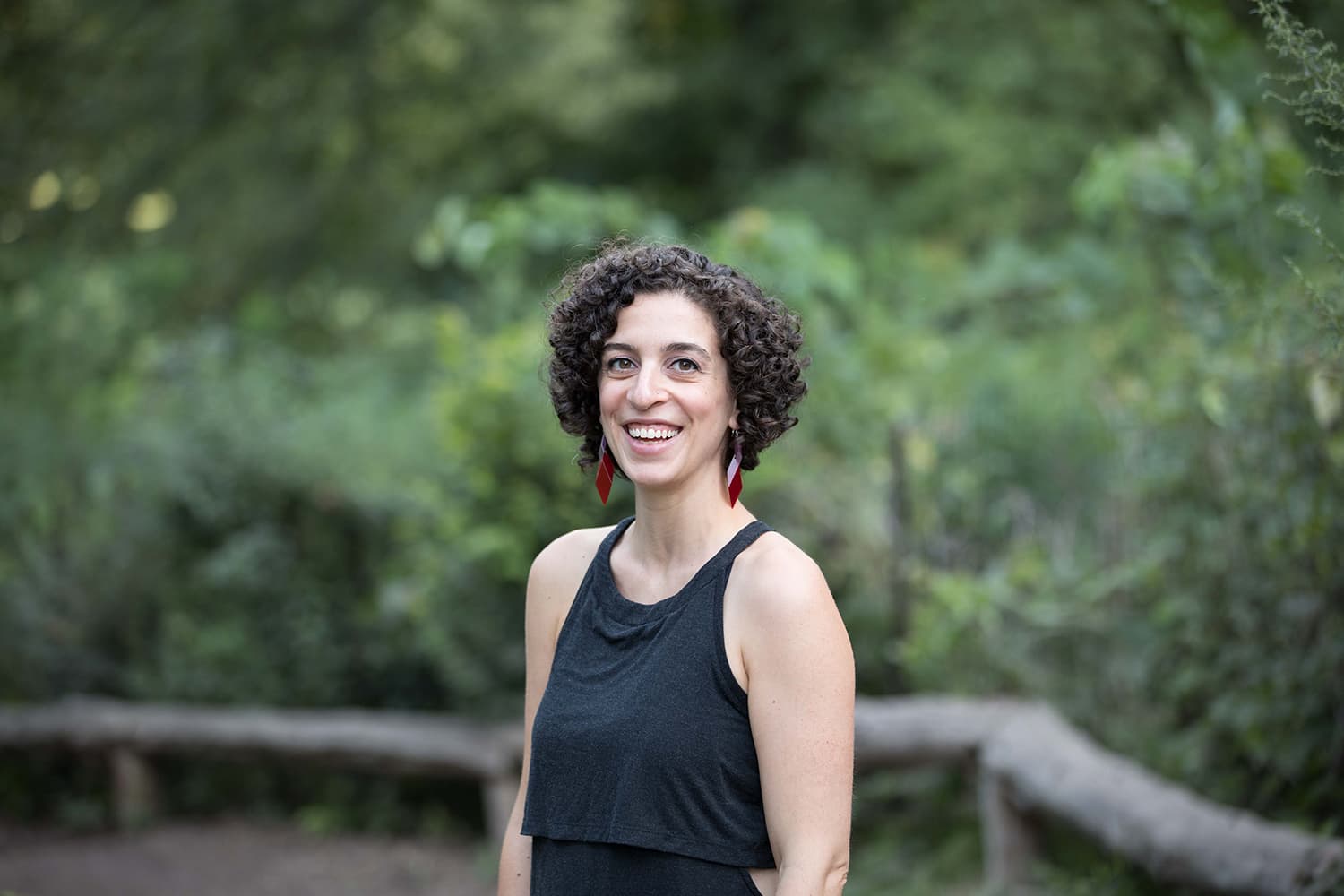
Artist Profile
Susan Stainman
Susan Stainman is an interdisciplinary artist, focusing in sculpture, installation, and social practice. She is a graduate of Brown University with a degree in American Studies and the Slade School of Fine Art in London for Sculpture. Her current artwork stems from her decade-long Buddhist meditation practice and work as a meditation teacher merging with her sculptural education. She has had solo exhibitions at AIR, Point of Contact, Lock Haven University and Black and Graze in New York City. Her group exhibition history ranges from Smack Mellon in Brooklyn to SUNY Potsdam and Studio 44 in Stockholm, Sweden. She received a fellowship from A.I.R. Gallery in 2013 and has been a New York Artist with the gallery since 2014. She has attended residencies at Atlantic Center for the Arts, Jentel Foundation, Virginia Center for the Creative Arts, CAC at Woodside, and Vermont Studio Center. Her work is held in universities and private collections nationally and internationally. Stainman lives and works in Brooklyn, NY.
Available Works
CV
SOLO EXHIBITIONS:
2022 Length of a Line, mhPROJECTnyc, New York, NY (forthcoming)
2022 Duo, Main Window Dumbo, Brooklyn, NY (forthcoming)
2021 That Moon Language, AIR Gallery, Brooklyn, NY
2019 Dream Bird, Hatching the Egg, Point of Contact, Syracuse, NY
2017 Dream Bird, Hatching the Egg, AIR Gallery, Brooklyn, NY
2015 It's All in the Flesh, Lock Haven University, Lock Haven, PA
2014 Color All the Way Through, AIR Gallery, Brooklyn, NY
2013 Black and Graze, New York, NY
SELECTED GROUP EXHIBITIONS:
2022 Lather, Rinse, Repeat, lokal_30, Warsaw, Poland
2022 Cloud Dreamscape, Putney Public Library, Putney, VT
2020 (s)(o)(f)(t)(w)(i)(n)(d)(o)(w)(s), Public Swim and AIR Gallery, New York, NY
2020 Sympoiesis, online exhibition, AIR Gallery, Brooklyn, NY
2020 Feminist and Queer Book Fair, AIR Gallery, Brooklyn, NY
2019 NADA House, Governors Island, NY
2019 We All Belong, Church of Heavenly Rest, New York, NY
2018 Empathy, Smack Mellon, Brooklyn, NY
2018 Across the Divide, The Art Museum, SUNY Potsdam, Potsdam, NY
2017 Who Cares, A.I.R. Gallery, Governors Island, NY
2017 Women On The Line, Studio 44, Stockholm, Sweden
2015 Unframed, AIR Gallery, AIR Gallery, NY
2015 Panorama, Christie's, Brooklyn, NY
2014 If These Walls..., AIR Gallery, Governors Island, NY
2014/2013 Wish You Were Here 12/13, AIR Gallery, Brooklyn, NY
2014/2013/2012 Christie's Staff Art Show, Christie's, New York, NY
2013 Curate NYC, Staten Island Creative Community, Staten Island, NY
2013 Governors Island Art Fair, New York, NY
FELLOWSHIPS:
2013-2014 A.I.R. Gallery, Brooklyn, NY
RESIDENCIES:
2019 Atlantic Center for the Arts
2017 Jentel
2017 Virginia Center for the Creative Arts
2015 Virginia Center for the Creative Arts
2015 Vermont Studio Center
2013 CAC at Woodside
2012 Vermont Studio Center
PUBLICATIONS:
2019 “Dream Bird, Hatching the Egg” catalogue, Point of Contact Gallery
EDUCATION:
2006-2010 Slade School of Fine Art, London, UK, BA Fine Art
2005-2006 Byam Shaw School of Art, London, UK, Foundation Diploma
1998-2002 Brown University, Rhode Island, USA, BA American Civilization
Artist Statement:
Susan Stainman’s interdisciplinary practice centers on embodied moments of intimacy, connection, and interdependence (our interconnectedness). Her ideas stem from her mindfulness practice; she is interested in the small gestures and sensorial moments of life: holding someone’s hand, a touch on the arm, a hug, or a conversation. Her soft sculptures, photography, installations, and events make physical these often overlooked or forgotten moments.
Stainman’s sculptural works encourage us to encounter the world through our senses first rather than our intellect. Her joyful lush colors, textures, and decorative sewing techniques are a lure to draw participants. Her materials reference clothing, that which we cover our bodies in daily. Her feminist perspective on the history of women’s work as producers of domestic materials and carers is evident in the formal and relational aspects of the work. The intimacy of the handmade quality of the making process is echoed in the intimacy of activating the work.
She creates digital photographs to document the physical objects and gesture of activation. These are lasting remnants of the emotions of a momentary interaction. Stainman’s social practice uses conversation as a medium to explore connection and Buddhist principles of interdependence. She creates events and has an ongoing recorded conversation practice. The artist creates situations for people to freely explore expansive ideas like generosity, being at home in the world, utopic experiences, and the creation of an intentional community. The art and practice of mindful conversation: listening, being present, speaking honestly and openly in a supportive and playful way are central to Stainman’s work.
Interview:
Tell us about your practice.
I am interested in how to use my art to create the conditions in which people experience connection and interdependence (interconnectedness). My sculptures move the bodies of my participants in space to create those conditions, using, for example, proximity or being physically attached to one another with my wearable works. Specifically, I am interested in an embodied, sensorial experience of connection and interdependence rather than an intellectual one.
My interest in interdependence comes from a meditation practice of more than a decade and an interest in thinking of art through a lens of social change. I use my mindfulness background when I spend time noticing the gestures of everyday interactions, how we express care and comfort towards one another. These most basic building blocks of how we relate to one another is the inspiration for my works. I want my viewers to think about their lives, their interactions with others, and their relationship with themselves in a new light. I believe we change through an emotional experience rather than an intellectual understanding of a situation so everything in the works is about drawing the viewer or participant in so that they might have that embodied understanding: the aesthetics, the textures and colors of the fabrics, the decorative elements, the positioning of bodies, and movement. Some works even have mindful conversation prompts as well.
Many of my artworks also have a collective element that further reinforces these ideas. I have an ongoing interview practice where I record audio interviews with friends, family, and exhibition goers about their lived experience of connection and interdependence. The audio for Shelter for Four comes from these conversations. Additionally, I create events, dinners, and mindful conversation practices both inside my exhibitions and at people’s homes to further add other voices to my works. It is an important part of my practice that I am not the sole author.
When people interact with your work, how do you hope they respond?
I want people to have an embodied experience. I want my viewers or, really, participants to interact with the works first from their senses and then their intellect. That is the first and most important thing: what is their embodied mental/emotional/physical experience? So the fabric is definitely in service to this desired response; the composition of the pieces and the way it causes bodies to move in space is in the service to this desired result.
What that embodied experience is, that’s quite open. I think intimacy and connection with others and ourselves can be joyful, awkward, frightening, and beautiful, sometimes all at once. I’ve had participants express all of those and many other responses. My favorite was a time at an open studios where I was showing Poised For Intimacy. Two people seemed unsure if they could sit down. I encouraged them to do so and go through the guided conversation. Over the next fifteen or so minutes, I could hear the two having an in-depth conversation. After they finished, one of them came over and told me that he was kind of annoyed at the beginning and reluctant to go through the whole booklet, but he actually really loved the experience and learned so much about himself and his friend. This was perfect.
Can you speak about your decision to use fabric as a material in your work?
I love fabric. I love everything about it. I love the textures, colors, the pliability, even down to the different weaves. I love wandering around fabric stores and getting inspired by all of it. It’s such a treat for the senses. Some people have trouble buying too many books. I have trouble buying too much fabric. I have so many yards of fabric in my studio waiting to be used.
I started using fabric, because I was interested in non-traditional sculptural materials in my work. I wanted to use a domestic material and process, a process that was considered to be women’s work, an insult really, in a fine art context. As I’ve continued to explore the material, there are so many other things that have felt right about fabric being my main medium. We are covered in fabric every day; we have such an intimate relationship with it and our choice of clothing says so much about who we are individually and how we want to present ourselves to the world. Additionally, there is a direct relationship between my process of making, how physical it is, particularly the small, repetitive, meditative movements of sewing and the experience I am looking for my audience to have. There is a sense of embodiment from start to finish in my artwork that’s vital.
How has your practice changed over time, during the pandemic specifically?
Before the pandemic, I was using proximity as a way to evoke a physical and emotional experience of intimacy. Portable Bench for Lingering Conversations and Poised For Intimacy are two good examples of what that looks like. Once Covid happened, proximity became taboo, especially between strangers. So I started to think about ways in which distance, particularly six feet, could be intimate as well.
The Belts for Being Together Apart came out of that investigation. The belts have a “tail” of three feet on either side with a zipper on the end. So, you have your own wide belt wrapped around your waist, hugging you in and then this tail that can be zipped to another person’s belt. There are ten belts in total and they can all be zipped together in increasing configurations. Once you are zipped together, you really are intimately connected. You can feel every movement that your partner makes. When one person moves, the other is forced to move. There is an intimacy and a relationship created.
More recently, I have been thinking about the ways in which we are still struggling. After two years of Covid and continued uncertainty, I notice a sense of disconnect in my interactions, my own internal relationship, and society at large. What’s necessary and helpful now? These are some of the questions that I'm asking myself. I don't have answers just yet, but asking the questions often leads to new possibilities.
How does documentation factor into your work?
Documentation gives me an opportunity to convey some of the emotional and physical aspects of my work to someone who has not seen them in person. While the physical object is important, a photograph of a static object does not paint the full picture of what my work is about. The ephemeral interaction between two or more people must be documented as well. I continue to experiment with how to best convey not just the movement of bodies, but the emotional component as well.
What are you working on next? Where can we find you and your work?
I’ll be in a group show over the summer in Warsaw, Poland at lokal_30, a feminist gallery there. I’ll also have a show opening in a window space in Dumbo, Brooklyn, Main Window Dumbo, at the end of July. I’m excited about the fact that there will be short dance performances throughout the three months that the piece is up. Later this fall I’ll be having a solo exhibition in a project space in NYC’s East Village mhPROJECTnyc.
In terms of new ideas, I’m really excited about creating completely immersive experiences, whether physically or sensorially. A completely immersive physical experience I’d love to make would be a space, almost like a room in a home, that is filled with my participatory objects: furniture, wearable works, etc. I have many ideas for dinnerware and ceramics. The walls would be covered in custom wallpaper. I want to create “Susan’s world” for lack of a better way of putting it. A home that is from start to finish about how to create the conditions for people to experience connection: to themselves and each other, in a playful, experiential oriented world.
Dinner event
Susan will work with you to produce a custom dinner event for up to ten people. An ephemeral part of her practice, she has previously created three-course dinner experiences that combined conversational prompts, mindfulness, and theater exercises around topics such as what it means to be at home in the world, generosity, what we owe to one another, and compassion. She strives to make each event unique and playful, encouraging participants to see the world anew. Please reach out to the artist directly for more details.
